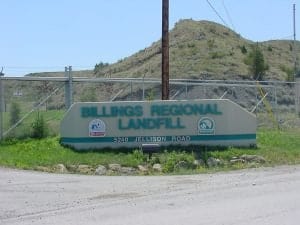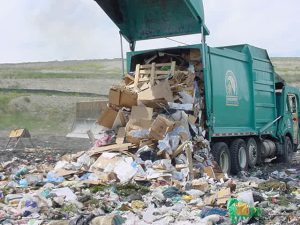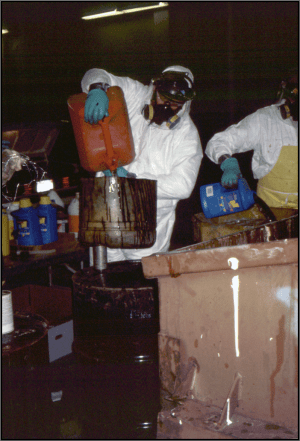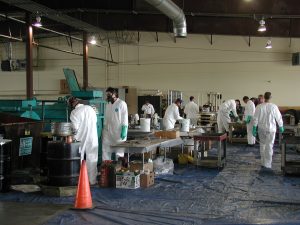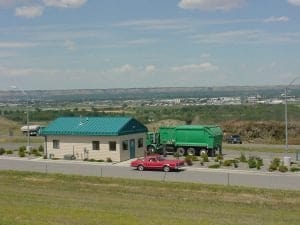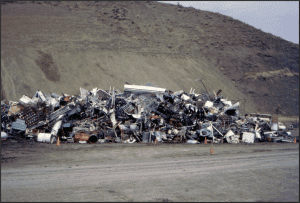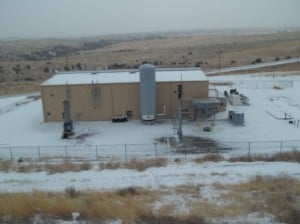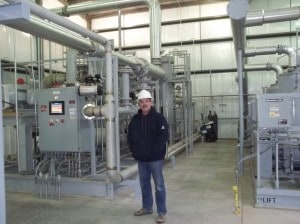In the Spotlight
The City of Billings, MT Solid Waste Division: Streamlining Operations For Efficiency
Not only is the Division optimizing hauling routes and keeping costs down, but they have also enhanced their landfill in order to remove its gas and prolong its life.
The history of the Solid Waste Division for the City of Billings begins in 1948 with the introduction and usage of a horse drawn buggy. The service allowed for the transportation of residents’ refuse to the local landfill located near Coulson Park, south of Billings along the Yellowstone River. In the late 1960’s, the Solid Waste Division purchased its first rear-loading garbage truck. With two loaders and a driver assigned to each truck, Billings residents’ garbage was collected mainly from alleys and then compacted in route to the current landfill. Two-manned ShuPak trucks joined the growing fleet, which increased worker efficiency. By 1980, roll-off trucks that transported large drop boxes were purchased and the first automated front loaders began service to accommodate the increasing commercial demand. With the addition of the one-manned barrel trucks, cans were no longer used in alleys and the required manpower was reduced by nearly 50 percent over the next 10 years. Although Billings experienced rapid growth between 1977 and 1993, costs to residents remained a constant $54 per year as the division simultaneously increased operating efficiency. Currently, Billings residents pay $98 a year. With a fleet of 43 trucks and 64 employees, 33,000 homes receive solid waste collection.
Billings Regional Landfill
The Billings Regional Landfill is located approximately three miles south of Billings, near the Yellowstone River. The property consists of approximately 842 acres with 254 acres licensed for waste disposal. In 1999, major improvements were made to the landfill that included upgrading the scales, public drop boxes, developing a composting area, and putting in a paved road.
As a Class II facility, the landfill accepts municipal solid waste, yard waste, wood, construction and demolition debris, asbestos, contaminated dirt, tires, sewage sludge, refinery waste and agricultural waste. Vehicles entering the landfill are charged by the weight of the load. Recycling services currently offered by the City of Billings Landfill include the collection of metals, newspaper, cardboard, antifreeze and used oil. The average amount of waste accepted by the landfill each year is 240,000 tons. The landfill is completely compliant to all local, State and federal laws.
The Billings Solid Waste Division has exclusive residential hauling rites within the City of Billings. The Regional Landfill has historically accepted waste from the City of Billings and Carbon, Stillwater and Yellowstone counties. In addition to these communities, the landfill now accepts waste from Musselshell and Treasure counties as well as the Town of Pryor and the City of Big Timber. In total, the landfill serves a population of approximately 200,000.
Streamlining Operations
Fortunately, the landfill has not experienced a significant drop in revenue from decreased construction activity in the area. However, the Solid Waste Division has struggled to maintain our level of service without increasing rates. “We are streamlining our operations in order to make us more cost efficient. For example, we are incorporating software to optimize our routes, thereby using less fuel and preventing excessive wear of our trucks. We have also increased mandatory health and safety meetings for all solid waste staff in order to keep insurance costs down and injury claims at a minimum,” says Vester Wilson, Solid Waste Division Superintendent.
Customer Service
The Division prides itself in providing a high level of service for a low cost. Residents pay $98.00 per year, or $8.17 per month. “We are able to provide a 96 gallon container for our curb service customers or 300 gallon containers for our alley service. We are also able to provide 96-gallon yard waste containers for residents that want them. In addition, we pick up any extra trash every week for our curb service residents at no charge. For alley customers, we clean the alleys once every three weeks. This fee also includes free access to the landfill for City of Billings residents,” says Wilson.
The Division also has a program to help residents that cannot take their garbage to the curb called Carry-Out Service. Collection workers go to specific houses and pick up the refuse for a small fee. They are also able to have lower fees for commercial collection and roll-off service, due in part to monthly safety training and experienced drivers. “We have fixed routes for all of our collections and this also adds to the efficiency of our operations,” says Wilson.
Landfill Enhancements
A persistent challenge for the Division over the years has been the need to prolong the life of the Regional Landfill in order to serve customers as long as possible without a costly expansion to the existing site. In order to meet this challenge, several waste diversion programs have been implemented that have proved not only successful in saving air space but also popular with customers. “For over a decade we have been composting yard waste at the landfill. However, approximately six years ago we began a yard waste curbside collection program that has diverted almost 13 percent of the waste volume entering the landfill,” says Wilson. “In addition, we have partnered with a local electronics recycling firm to host a bi-annual E-waste collection events for landfill users. We also divert metal-containing waste from the landfill for recycling.”
Tony Lehner, Landfill Supervisor, says that a challenge they were facing until recently was that the landfill was not particularly user friendly. A little over a decade ago, the Regional Landfill consisted of dirt roads, no scale house and customers were required to drive into the waste pile to dump their loads. In 1999, the landfill was revamped with major infrastructure improvements including a new scale house, paved roads and designated drop-off containers for customers away from the active fill area. In addition, a permanent used oil and used antifreeze drop-off site was installed, along with recycling bins for newspaper, aluminum and cardboard. Landfill infrastructure improvements took approximately 18 months to complete and were met with resounding approval by the public. “As a result, going to the landfill is not the adventure it once was; no more flat tires and getting stuck in mud,” says Lehner.
In 2009, Montana Dakota Utilities (MDU) and the City of Billings entered into a private/public partnership to construct and operate a system to remove landfill gas from the Billings Regional Landfill, clean it and deliver the gas as a marketable product into the local pipeline network. As a result, 61 3-foot diameter vertical extraction wells were drilled and completed in early 2010. A piping network and processing plant for the gas were constructed in the fall of 2010 and facility began operating in late 2010. Because the gas extraction system was voluntarily constructed and not required under environmental regulation, both the City and MDU benefit from carbon credits as well.
Facing Current and Future Challenges
Expanding services while keeping rates at the level the public has come to expect is also a challenge for the Division. “One of our biggest challenges is educating the public as to the cost of providing the services they have come to expect and those they want us to incorporate,” stresses Wilson. “For example, expanding our recycling programs is a challenge due to the lack of local markets for recycled materials. The closest markets are typically a state or two away from Billings. Transportation costs prevent several commodities from being economically feasible to recycle. The public wants to do the right thing but not necessarily at the cost for the service.”
As for future plans, Wilson says that not only are they currently providing household hazardous waste and electronics collection events for all landfill users, they are also looking into implementing more recycling at the landfill such as food waste, asphalt shingles and gypsum. “We are planning to construct a permanent hazardous waste collection facility to better service our customers.”
For more information on the City of Billings, MT Solid Waste Division, contact Vester Wilson, Solid Waste Superintendent, at [email protected].
Entrance sign to the Billings Regional Landfill. The Landfill serves a 5-county area and receives over 240,000 tons per year.
A City of Billings front load truck delivering commercial waste to the landfill.
Solid Waste Division employees working the annual Toxic Trash Round-Up, a household hazardous waste event for 5 counties. In 2011, the event drew 1500 cars and collected over 40 tons of hazardous waste.
The Billings Regional Landfill scale house. View looking north towards the City of Billings and the rimrocks.
The metals pile at the Billings Regional Landfill. Metal containing waste is diverted and recycled. Approximately 900 tons of metal is recycled annually.
The MDU gas plant located on landfill property. The City of Billings and Montana Dakota Utilities partnered to remove landfill gas, clean it and introduce it directly into a natural gas pipeline that runs behind the landfill.
Mike Ogburn, MDU Landfill Gas Operations Specialist, is responsible for fine-tuning the inner workings of the plant.
Images courtesy of the City of Billings Solid Waste Division.

